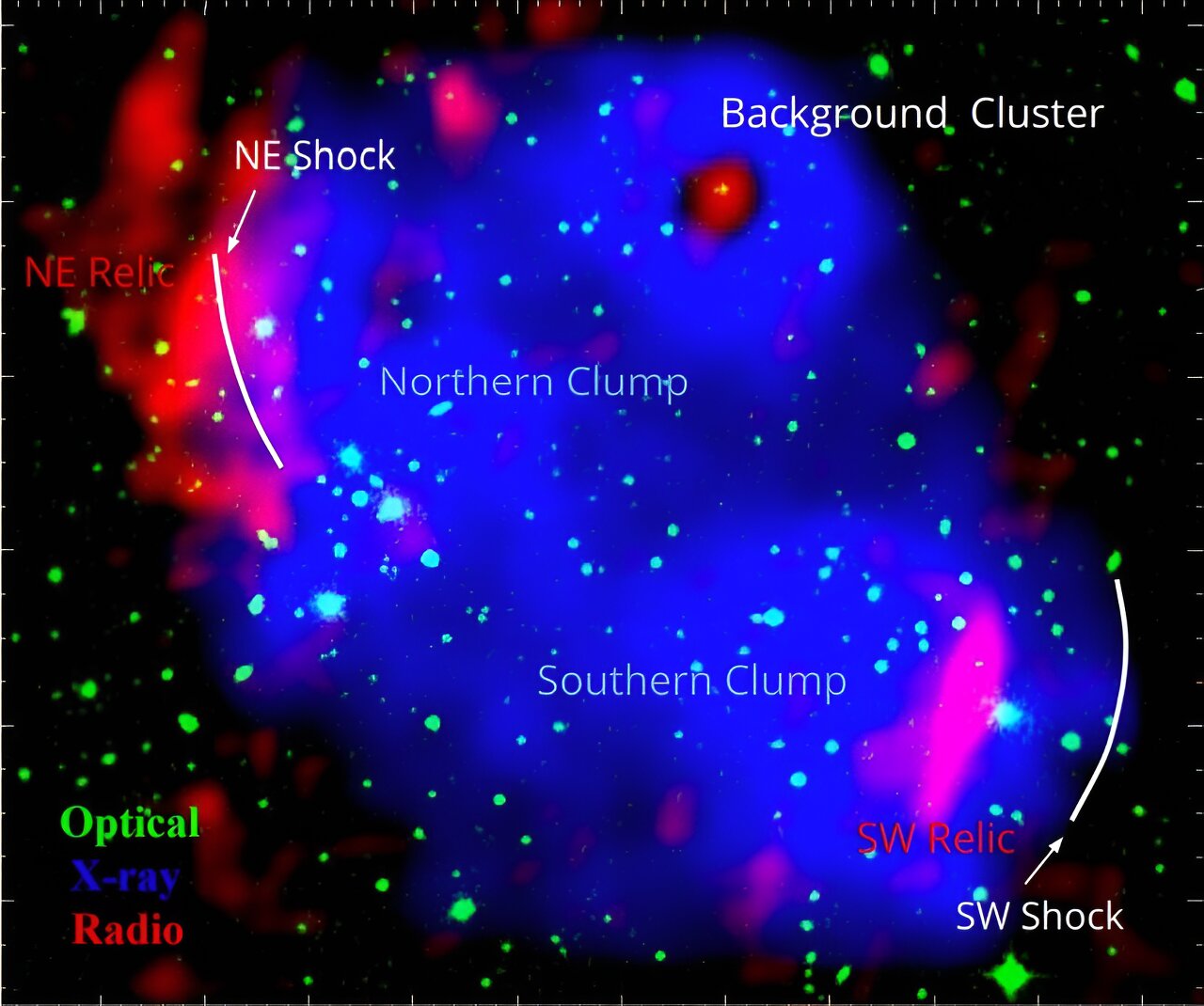
Astronomers from India and Taiwan have used the upgraded Giant Metrewave Radio Telescope (uGMRT) to perform radio observations of a galaxy cluster known as Abell 2108. As a result, they detected a second radio relic, which is much larger and differs in morphology from the previously identified relic in this cluster. The finding was reported in a paper published Dec. 7 on the pre-print server arXiv.
Radio relics are diffuse, elongated radio sources of synchrotron origin. They occur in the form of spectacular single or double symmetric arcs at the peripheries of galaxy clusters. Astronomers are especially interested in the search for double relics as such features could provide crucial information about cluster mergers and the resultant emission.
At a redshift of 0.09, Abell 2108 (or A2108 for short) is a galaxy cluster with an estimated mass of about 301 trillion solar masses. Previous observations have found that the cluster hosts a radio relic in its southwestern region with dimensions of about 980,000 by 390,000 light years.
Now, a team of astronomers led by Swarna Chatterjee of the Indian Institute of Technology Indore, India, report the discovery of another radio relic in Abell 2108, which makes it one of only a few low-mass galaxy clusters with double radio relics.
“In this paper, we report the discovery of a new relic in the northeast of low-mass galaxy cluster A2108 and confirm the presence of the other relic in the southwest with higher significance using uGMRT band-3,” the researchers wrote.
First of all, Chatterjee’s team spotted a distinct diffuse emission feature in the northeastern periphery of Abell 2108. The brightest region of this feature was measured to be about 1.4 million light years away from the cluster’s X-ray center. The location and morphology of the emission indicate that it is a radio relic.
The newfound radio relic showcases a patchy structure, differing in morphology from the known one, and is also much larger—it spans over a region of two by one million years. The northeastern relic has an integrated flux density of 24.8 mJy, therefore more than two times higher than the southwestern one.
The observations found that both radio relics in Abell 2108 have considerably low radio power extrapolated to 1.4 GHz, when compared to other double relic clusters. Moreover, the results indicate that the surface brightness ratio of the two relics differs, which suggests that they may not have the same origin.
The astronomers also detected the presence of surface brightness jump and tentative temperature jump in the midst of the northeastern radio relic, indicative of a weak supersonic shock. This could explain the low radio luminosity of the newfound relic. https://phys.org/news/2023-12-radio-relic-galaxy-cluster-abell.html








Recent Comments